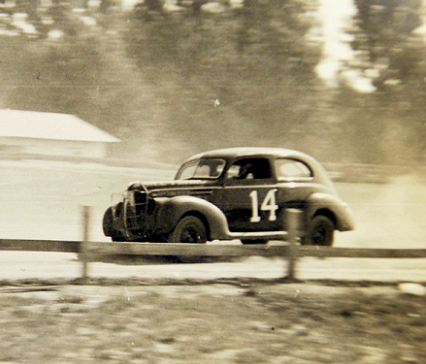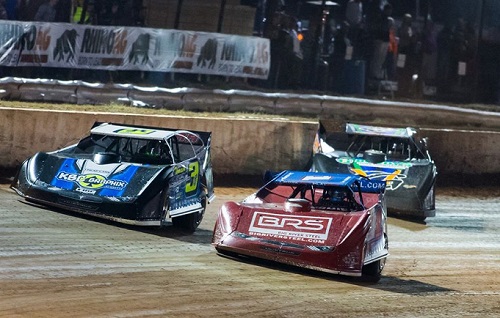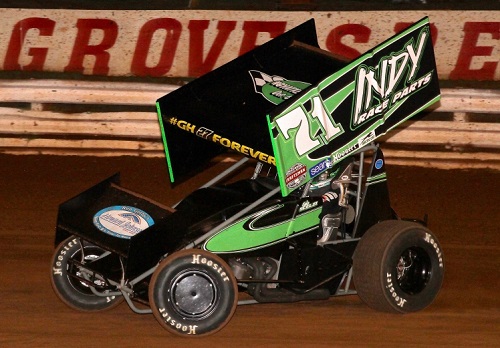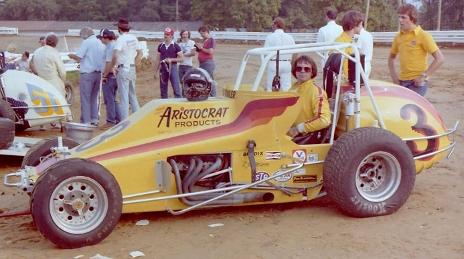WILLIAMS GROVE SPEEDWAY - MECHANICSBURG PA

In late 1937, car owner at that time, Emmett Shelley convinced Williams Grove Park Owner Roy Richwine to build a speedway across the street from the park, and on May 21, 1939, Williams Grove Speedway held its first race. The speedway ran "big car" races under the American Automobile Association (AAA) sanction as well as select American Motorcyclist Association (AMA) Pro Flat track races in its first few years of operation. In 1942, the speedway halted operation due to World War II until after its completion in 1945. In 1947, a year after the continuation of racing, major improvements at the speedway were made including lighting for night racing, a pedestrian tunnel at the entrance to turn one and the "famous" bridge across the backstretch. In 1949, the American Championship Car Racing National Championship would make an appearance, drawing a large crowd in a race won by Johnny Mantz. At the end of the 1940s the National Roadster Championships were held at the speedway, which would help greatly influence the future of
racing in the next decade. The 1950s saw a generational shift in racing from open wheel to flathead-powered "fendered" cars. Big cars were still a very popular attraction on select Sunday afternoons, but Jalopy Stocks became the weekly division on Fridays. These pre-war coupe's flathead engines were quickly replaced by OHV (overhead valve) power plants as post-war auto production increased and renamed Modified Stocks. Stock Cars also made numerous appearances including


the NASCAR Cup division in 1954. The Cup cars only raced here once, but the crowd of over 21,000 saw a great race. Dick Rathman and Herb Thomas swapped the lead five times in the first 22 laps. Rathman managed to take control and lead for 40 laps, but was passed by Thomas with 139 laps to go. Thomas would lead all of the final laps; but Rathman was right there nipping at his heels. When the checkers flew Thomas got the win; but Rathman was right there within four car lengths. Hershel McGriff finished third; while Joe Eubanks and Jimmie Lewallen rounded out the top five. The 1960s saw a major evolution of the dirt track racing centered in Central Pennsylvania. The Flathead-powered coupes of the 1950s gave way to Modified stock cars and their more powerful engines proved a boon to The
Grove with its long straightaways and tight turns. By 1963, the Modifieds continued to evolve, now with still-recognizable stock bodies which had been narrowed, chopped and lightened. In 1964 the first Super Modifieds appeared. These featured drastically cut-down and sometimes custom bodies on narrowed stock frames. In the 1970s, modern Sprint Car racing and Late Models were the weekly divisions along with Midgets, Street Stocks and Limited Late Models making routine appearances throughout the decade. In the 1980s, more drivers were migrating to the area and the local talent was arguably at its best. The 1980s also brought on the classification of sprint car racing by engine size. The main division would become 410 ci Sprint cars with aluminum blocks for national touring series. In the 1990's, racing at the speedway saw a new


Sprint car ace Rich Vogler 1981
youth movement and 358 sprint cars were now a very promising division, drawing large car counts and acting as a development division for the 410 sprint cars. In 2006, the speedway expanded its racing program to two nights a week to incorporate the continuation of racing divisions from the closing Silver Springs Speedway. The speedway is entering its 81st year of operation, with racing every Friday from March to October and other special events. One of these special events is the $75,000 to win National Open for sprint cars sanctioned by the World of Outlaws racing series held in late September or early October each year.
All Photos copyright and are property of their respective owners
